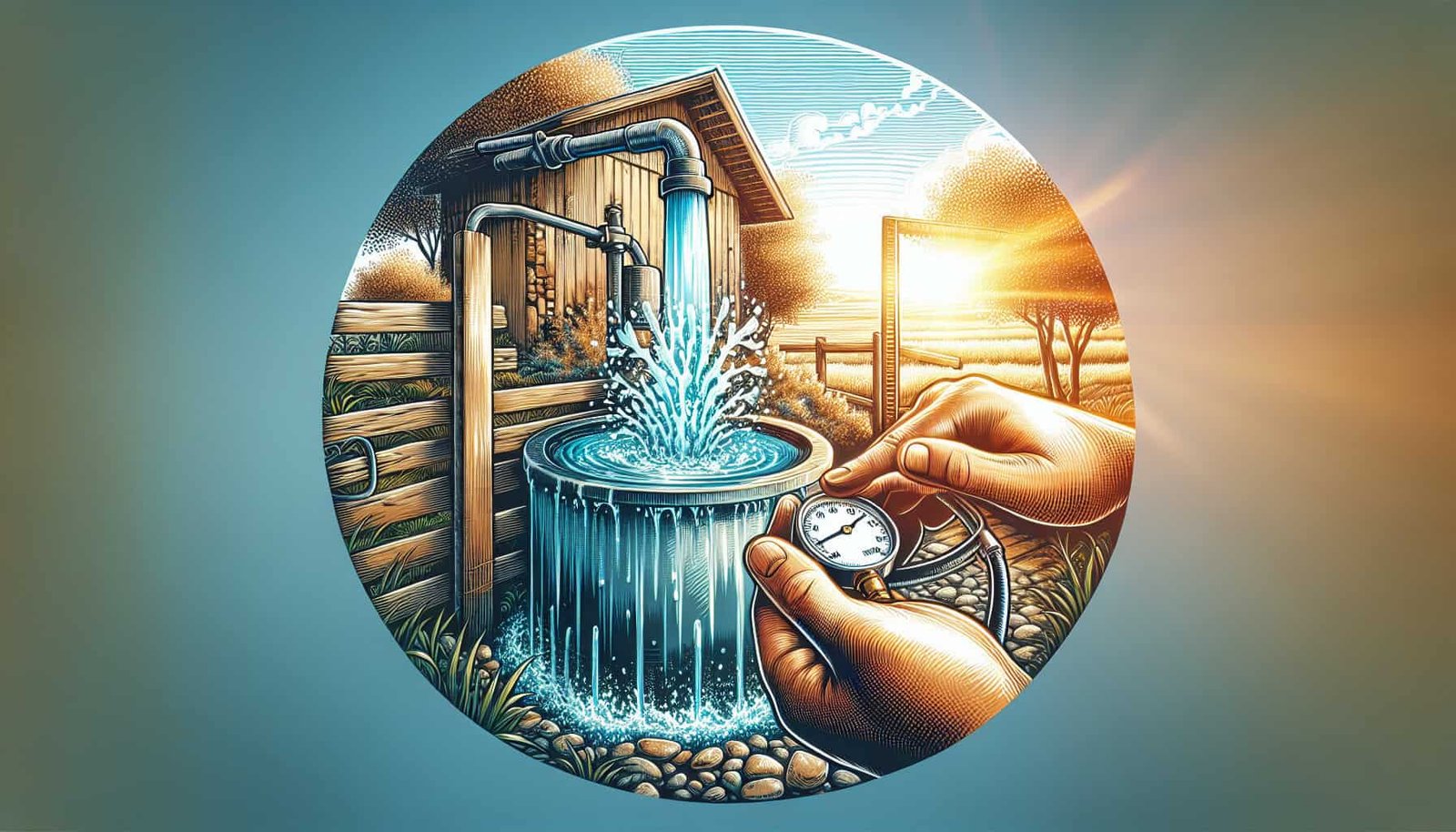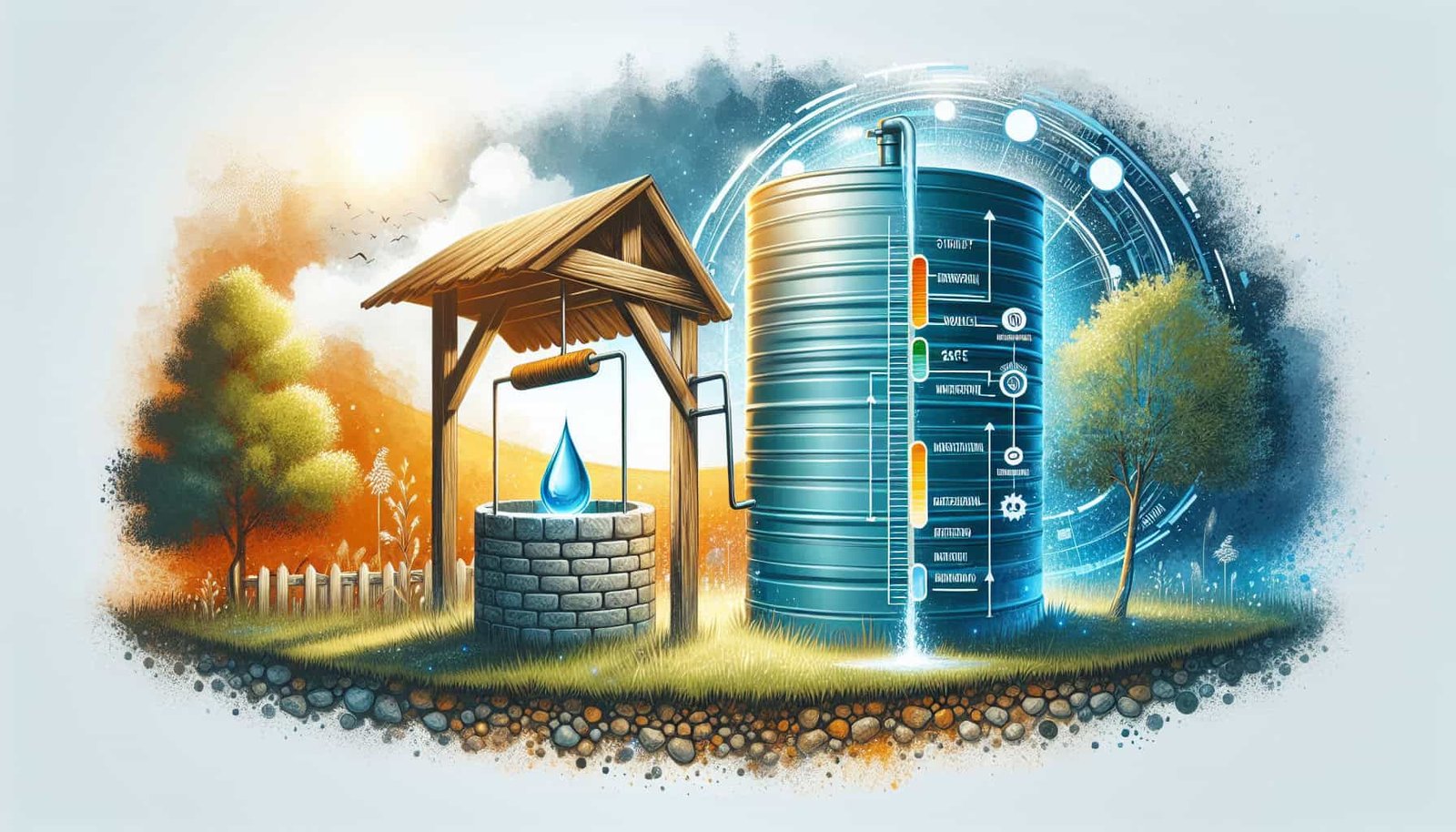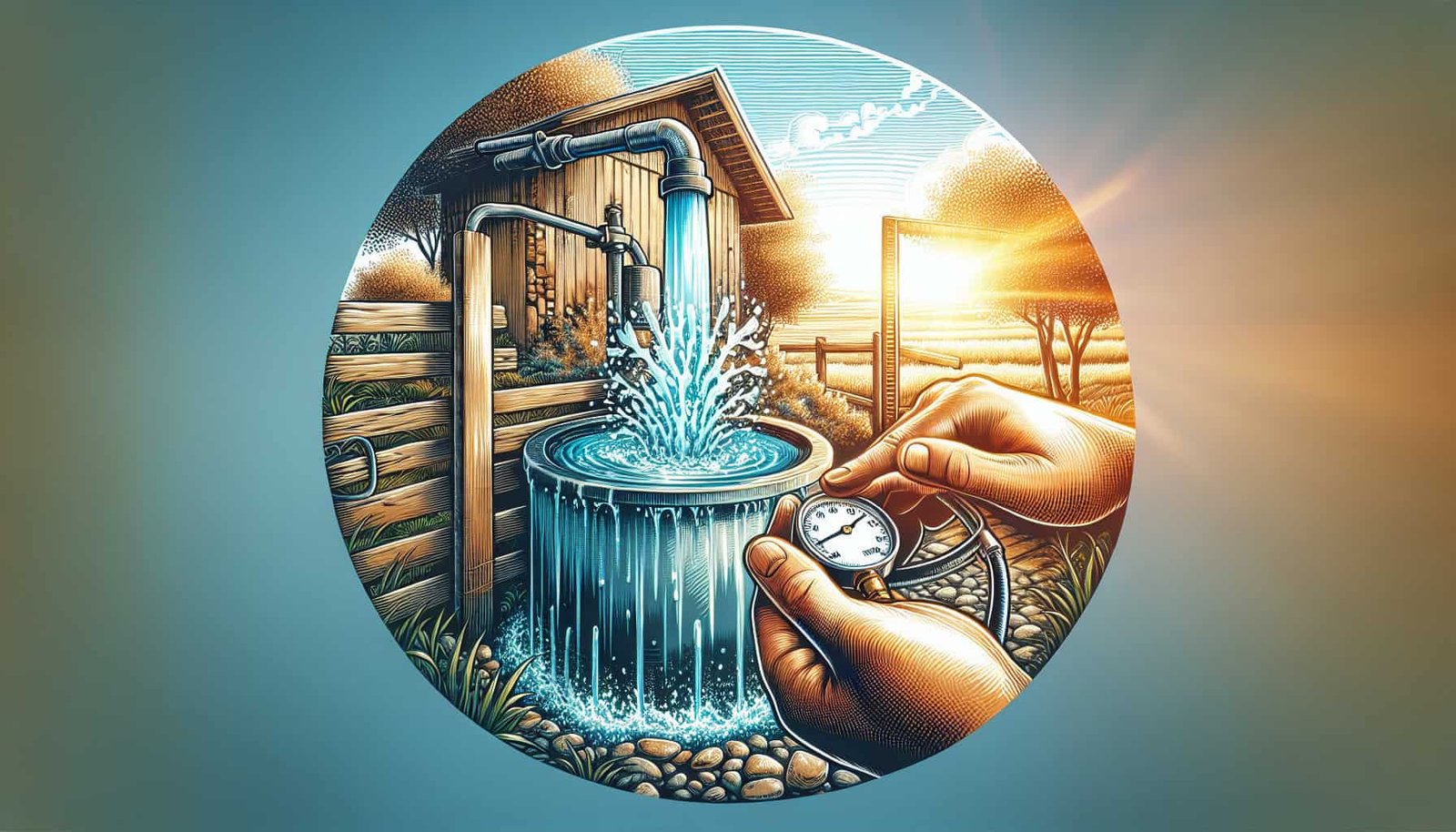Are you living in a region with well water and wondering how to ensure the safety of your well water? Look no further! In this article, we will discuss how you can maintain the well water pressure tank in accordance with guidelines to ensure the safety and quality of your water. By following these simple steps, you can have peace of mind knowing that your well water is safe for use in your home. So, let’s dive in and explore the best practices for well water safety in regions with well water pressure tank maintenance guidelines!
Importance of Well Water Safety
Well water safety is a crucial concern for all individuals who rely on well water as their primary source of drinking water. Understanding the potential risks associated with well water is essential in ensuring the health and well-being of yourself and your loved ones. Contaminated well water can pose serious health hazards and may lead to various diseases and illnesses. Therefore, it is crucial to be aware of the impact of contaminated well water on health and the legal regulations and standards that govern well water safety.
Understanding the potential risks
Well water is susceptible to various types of contaminants, including bacteria, viruses, chemicals, and minerals. These contaminants can enter the well water through various sources, such as agricultural activities, industrial pollutants, and septic systems. Additionally, natural geological formations and old infrastructure can also contribute to the presence of contaminants in well water.
Impact of contaminated well water on health
Consuming contaminated well water can have severe consequences on your health. Bacterial contaminants, such as E.coli, can cause gastrointestinal illnesses, leading to symptoms like diarrhea, nausea, and vomiting. Viruses, on the other hand, can cause diseases like Hepatitis A and Norovirus, resulting in severe illness and even hospitalization.
Chemical contaminants, such as pesticides and heavy metals, can cause long-term health issues, including organ damage, developmental problems, and even cancer. Minerals like arsenic and fluoride, if present in high concentrations, can also pose health risks.
Legal regulations and standards
To protect the health and safety of individuals relying on well water, various legal regulations and standards have been put in place. These regulations govern the construction, operation, and maintenance of wells to ensure the delivery of safe and clean drinking water.
Local health departments and environmental agencies typically oversee the enforcement of these regulations. It is essential to familiarize yourself with the specific regulations and standards in your region and comply with them diligently to maintain the safety of your well water.
Overview of Well Water Pressure Tank Maintenance
A well water pressure tank plays a vital role in the proper functioning of the well water system. It helps maintain consistent water pressure throughout the plumbing system and effectively manages the cycling of the well pump. Regular maintenance of the pressure tank is crucial to ensure its optimal performance and prevent any potential issues that may arise.

What is a well water pressure tank?
A well water pressure tank is a storage container that holds pressurized water delivered by the well pump. It consists of a bladder or diaphragm that separates the water from the air and maintains the pressure within the tank. The pressure tank allows the well pump to operate less frequently, reducing its wear and improving energy efficiency.
Importance of regular maintenance
Regular maintenance of the well water pressure tank is essential to maintain its efficiency and prolong its lifespan. Neglecting maintenance can lead to various problems, such as reduced water pressure, frequent pump cycling, and even damage to the well pump itself.
By implementing a routine maintenance schedule, you can identify and address any potential issues before they escalate into significant problems. This not only ensures the proper functioning of your well water system but also helps in preserving the quality and safety of your well water.
Components involved in maintenance
Maintaining a well water pressure tank involves several key components. These components include the pressure switch, pressure relief valve, air pressure, and the overall condition of the tank.
Regularly inspecting and testing the pressure switch is important to ensure that it is functioning correctly. This switch controls the operation of the well pump by activating and deactivating it based on the water pressure in the tank.
The pressure relief valve is another critical component that should be checked periodically. It helps prevent excessive pressure build-up within the tank, which can lead to damage or even an explosion.
Monitoring the air pressure in the tank is also necessary. Over time, the air pressure can decrease, affecting the efficiency of the pressure tank. Regularly checking and adjusting the air pressure can help maintain the desired pressure levels.
Lastly, the overall condition of the tank should be assessed during maintenance. Look for any signs of corrosion, leaks, or damage that may impair the tank’s performance or compromise its safety.
Guidelines for Well Water Pressure Tank Maintenance
To ensure the proper maintenance of your well water pressure tank, it is important to follow specific guidelines. These guidelines will help you effectively inspect and maintain the pressure tank to prevent any potential issues and maintain the safety and quality of your well water.
Inspecting the pressure tank
Regularly inspecting the pressure tank is an essential part of well water pressure tank maintenance. Start by checking for any signs of corrosion, leaks, or damage to the tank itself. Examine the fittings, connections, and valves for any signs of wear or deterioration.
Additionally, inspect the pressure relief valve to ensure it is functioning correctly and not blocked by debris or sediment. The pressure switch should also be tested to ensure it activates and deactivates the well pump correctly.

Checking the well system components
Alongside the pressure tank, it is also important to inspect and maintain other components of the well system. Check the well pump, pressure gauge, and pressure control switch for any issues or abnormalities. Ensure that the well pump is working optimally and that the pressure gauge accurately displays the system’s pressure.
Testing water quality regularly
Regularly testing the quality of your well water is essential to ensure its safety and identify any potential contaminants. Water quality testing can help detect the presence of bacteria, viruses, chemicals, and minerals that may pose health risks.
Follow the recommended testing guidelines provided by your local health department or environmental agency. These guidelines typically outline the frequency of testing and the specific contaminants to be assessed.
Taking water samples from different parts of your plumbing system, including faucets and showerheads, will provide a comprehensive understanding of the water quality throughout your home.
Ensuring Well Water Safety
To ensure well water safety, it is crucial to adhere to the maintenance guidelines and implement preventive measures. By understanding potential contaminants and regularly testing water quality, you can proactively address any issues and maintain a healthy water supply.
Adhering to maintenance guidelines
Following the maintenance guidelines mentioned earlier is critical to ensuring well water safety. Regular inspections, testing, and addressing any identified issues promptly will help minimize the risk of contamination and maintain the efficiency of the well water system.
Understanding potential contaminants
Being aware of the potential contaminants that may affect your well water is the first step in preventing their presence. Understanding the local geography, nearby sources of pollution, and potential risks specific to your region will help you take appropriate preventive measures.
Potential contaminants can include agricultural chemicals, industrial pollutants, septic system effluents, as well as natural minerals and geological factors. By understanding these sources of contamination, you can implement measures to mitigate the risks effectively.

Implementing preventive measures
Preventing contamination is crucial in maintaining well water safety. Some preventive measures you can take include:
- Regularly inspecting and maintaining the well cap to prevent the entry of surface water.
- Ensuring proper disposal of chemicals and hazardous waste to prevent contamination of groundwater.
- Maintaining a safe distance between potential pollution sources and the well.
- Regularly inspecting and properly disposing of unused or expired pesticides and fertilizers.
- Implementing appropriate filtration or treatment systems to address specific contaminants, if necessary.
By implementing these preventive measures, you can significantly reduce the risk of contamination and ensure the safety of your well water.
Testing Well Water Quality
Regularly testing the quality of your well water is paramount to ensuring its safety. By identifying common contaminants, employing suitable testing methods, and adhering to recommended testing frequencies, you can maintain a healthy and reliable water supply.
Identifying common contaminants
Common contaminants found in well water include bacteria, viruses, nitrates, heavy metals, and various chemicals. These contaminants can enter the water from agricultural runoff, industrial activities, malfunctioning septic systems, or natural geological formations.
Testing for common contaminants will help you identify potential risks and take appropriate measures to ensure the safety of your well water.
Methods to test for water quality
Several methods are available to test the quality of well water. These methods include laboratory testing and home test kits.
Laboratory testing provides the most comprehensive and accurate results. You can collect water samples and send them to a certified laboratory for analysis. The laboratory will test for specific contaminants and provide detailed reports on the water quality.
Home test kits are readily available and can provide quick assessments of certain contaminants. These kits typically include test strips or vials that change color based on the presence of specific contaminants. While home test kits may have limitations in terms of accuracy and range of contaminants tested, they can still provide valuable insights into the overall water quality.
Frequency of testing
The frequency of well water testing depends on various factors, including local regulations, potential risks, and personal preferences. It is generally recommended to test for bacteria and nitrates at least once a year. However, in areas with high agricultural activity or other pollution sources, more frequent testing may be necessary.
Additionally, consider testing your well water after any major maintenance or repairs to ensure that the water quality has not been affected.

Addressing Common Well Water Issues
While regular maintenance and testing can help prevent common well water issues, it is essential to be aware of potential problems and address them promptly to ensure the safety and quality of your well water.
Low water pressure
Low water pressure can be caused by various factors, including issues with the pressure tank, well pump, or plumbing system. If you experience consistently low water pressure, it is recommended to consult a professional well water service provider to assess the situation and identify the underlying cause.
Presence of sediments
Sediments in well water can indicate a problem with the filtration system or a buildup of minerals in the well. These sediments can affect the taste, odor, and overall quality of the water. Regular maintenance, including cleaning the well and inspecting the filtration system, can help address this issue.
Odor or taste issues
Unpleasant odors or tastes in well water can be caused by various factors, including bacterial growth, chemical contamination, or the presence of minerals. Testing the water quality can help identify the specific issue, and appropriate treatment methods can be employed to address the odor or taste problems.
Choosing Professional Well Water Services
In certain situations, seeking professional help is necessary to address complex well water issues or ensure the proper maintenance of your well water system.

When to seek professional help
You should consider seeking professional well water services if:
- You are experiencing persistent well water issues, such as low water pressure, frequent pump cycling, or water quality problems.
- You are unsure about how to perform maintenance tasks or interpret test results.
- You need assistance in choosing and implementing appropriate treatment systems for specific contaminants.
Reputable well water service providers have the expertise, experience, and specialized equipment to accurately diagnose issues and provide effective solutions.
Qualities of a reputable service provider
When choosing a well water service provider, consider the following qualities:
- Proper licensing and certifications: Ensure that the service provider is properly licensed and certified to perform well water-related services in your area.
- Experience and expertise: Look for a provider with a proven track record and extensive experience in well water system maintenance, repairs, and testing.
- Good reputation: Research customer reviews and ask for references to gauge the service provider’s reputation and reliability.
- Prompt and thorough service: A reputable provider should respond promptly to inquiries, be transparent in their communication, and perform thorough assessments and inspections.
Cost considerations
The cost of professional well water services can vary depending on the specific services required, the complexity of the issue, and the location. It is recommended to obtain multiple quotes from reputable service providers and compare their services, expertise, and pricing before making a decision.
Common Well Water Safety Mistakes to Avoid
To ensure the safety of your well water, it is important to avoid common mistakes that can compromise the quality and pose health risks.
Neglecting regular maintenance
Neglecting regular maintenance of your well water system, including the pressure tank, can lead to various issues, including decreased water pressure, frequent pump cycling, and contamination. By adhering to a regular maintenance schedule, you can catch potential problems early and prevent them from escalating.
Ignoring unusual changes in water quality
Unusual changes in the odor, taste, or appearance of your well water should never be ignored. These changes can indicate a problem with the well or the water itself. Promptly address any unusual changes by testing the water quality and consulting a professional if necessary.
Using unapproved treatments
Using unapproved treatments or chemicals to address well water issues can be dangerous and potentially worsen the problem. Always consult professionals or adhere to approved treatment guidelines provided by your local health department or environmental agency.
Steps to Take in Case of Well Water Contamination
In the unfortunate event of well water contamination, it is crucial to take immediate actions to protect your health and consult the appropriate experts and authorities.
Recognizing signs of contamination
Signs of well water contamination can include changes in the odor, taste, or appearance of the water, as well as symptoms of illness after consuming the water. If you suspect contamination, it is important to take immediate action to mitigate the risks.
Immediate actions to protect health
If you suspect well water contamination, follow these immediate actions to protect your health:
- Discontinue use: Stop using the well water for drinking, cooking, bathing, and any other purpose until the issue is identified and resolved.
- Seek an alternative water source: Use bottled water or obtain water from a safe municipal source while investigating and addressing the contamination issue.
- Notify appropriate authorities: Report the suspected contamination to your local health department or environmental agency so they can assist in assessing the situation and guiding you through the necessary steps.
- Consult a professional: Reach out to a reputable well water service provider or water quality expert to investigate the issue and recommend appropriate remedial actions.
Consulting experts and authorities
In case of well water contamination, it is crucial to consult experts and authorities for guidance and assistance. Local health departments, environmental agencies, and certified well water professionals have the knowledge and expertise to identify and resolve the contamination issue effectively.
Conclusion
Ensuring the safety and quality of well water should be a top priority for individuals relying on well water as their primary water source. By being proactive in maintenance and testing, understanding potential contaminants, and implementing preventive measures, you can maintain a healthy and reliable water supply. Regular inspection and maintenance of the well water pressure tank, along with adherence to guidelines and regulations, will help mitigate risks and ensure the safety of your well water. Prioritize well water safety through proper maintenance, regular testing, and prompt action in case of contamination to ensure a continuous supply of safe and healthy water for you and your loved ones.

